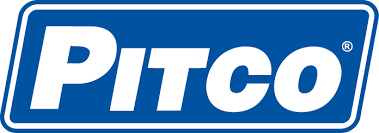Optimizing Commercial Frying Oil Quality Using TPM and IoT Solutions

Rising vegetable oil prices are becoming a significant challenge for foodservice operators. With oil costs cutting into thin profit margins, bar, restaurant, and grocery store operators need a solution. Fortunately, technology from Pitco fryers, integrated with smart solutions such as Powerhouse Dynamics’ Open Kitchen platform, provides operators with real-time data, which enables them to make better decisions around oil management.
The Basics of Frying Oil Management
A key indicator of oil quality is the Total Polar Materials (TPM) level, which is a direct measure of how much frying oil has degraded over time. When frying oil is used, it accumulates polar compounds, affecting the food’s taste, texture, and safety. Reducing these levels ensures that operators only replace the oil when necessary, preventing unnecessary waste and maintaining consistent food quality. This not only extends the life of the oil but also helps foodservice businesses adhere to safety standards.
Advanced solutions like TPM monitoring offer a precise, data-driven way to track oil quality and ensure replacement at the right time. Operators who use TPM technology effectively can expect an increase in food consistency and a reduction in oil-related expenses.
Enhancing Oil Management with IoT and Connected Fryers
IoT (Internet of Things) connected fryers take oil management to the next level. With sensors monitoring real-time data such as cook times, temperatures, and TPM levels, operators have complete visibility into their oil’s condition at all times, even off-site. This level of insight empowers operators to make data-driven decisions, whether adjusting cooking times to preserve oil life or ensuring temperature fluctuations don’t degrade the oil prematurely.
Platforms like Powerhouse Dynamics’ Open Kitchen provide centralized access to this data, allowing operators to track oil quality across multiple locations. This is particularly useful for chains and multi-unit operators, enabling consistent oil management practices across all kitchens. The result? Operators reduce waste, extend oil life, and, ultimately, lower their costs.
Why Automating TPM Is Important for the Bottom Line
Automating TPM monitoring is a game changer for foodservice operators looking to safeguard their profits. By integrating automated commercial frying systems that continuously track oil quality, operators can make informed decisions without relying on manual checks, which are often inconsistent and time-consuming. These smart systems use sensors to monitor oil degradation in real time, alerting operators when it’s time to change the oil based on data. Removing the guesswork, along with the possibility of human error.
The result? Consistently high food standards, lower oil waste, and substantial savings.
Boosting Profitability through Better Oil Quality Control
Connected solutions like Pitco commercial fryers and automated connection platforms like Open Kitchen’s IoT make it easy for operators to stay on top of oil quality and fryer performance. This proactive approach to oil management doesn’t just enhance food quality. It significantly boosts profitability. By optimizing oil use, operators can reduce the frequency of oil changes. That, in turn, reduces one of the most significant operational expenses for kitchens that rely heavily on fryers. As a result, consistently good food keeps customers returning while also directly impacting the restaurant’s bottom line.
There’s a Pitco fryer waiting to improve your foodservice business’s commercial frying oil quality:
Topics
- Foods & Trends (93)
- Fryers (89)
- Oil (58)
- Fried Food (54)
- Filtration (33)
- See All Topics

